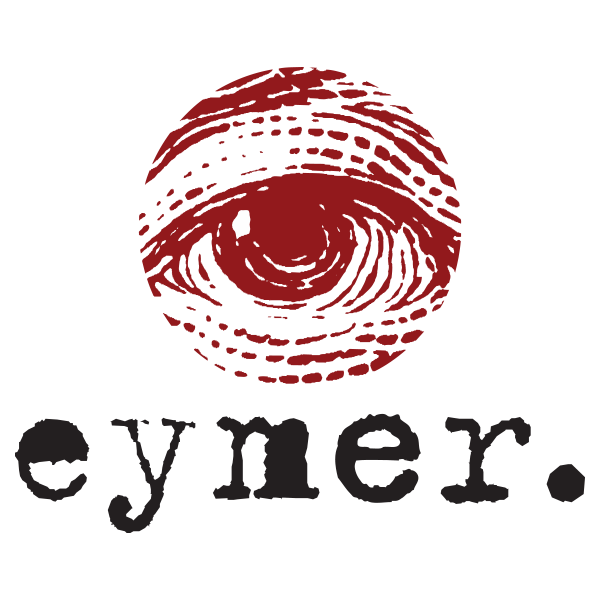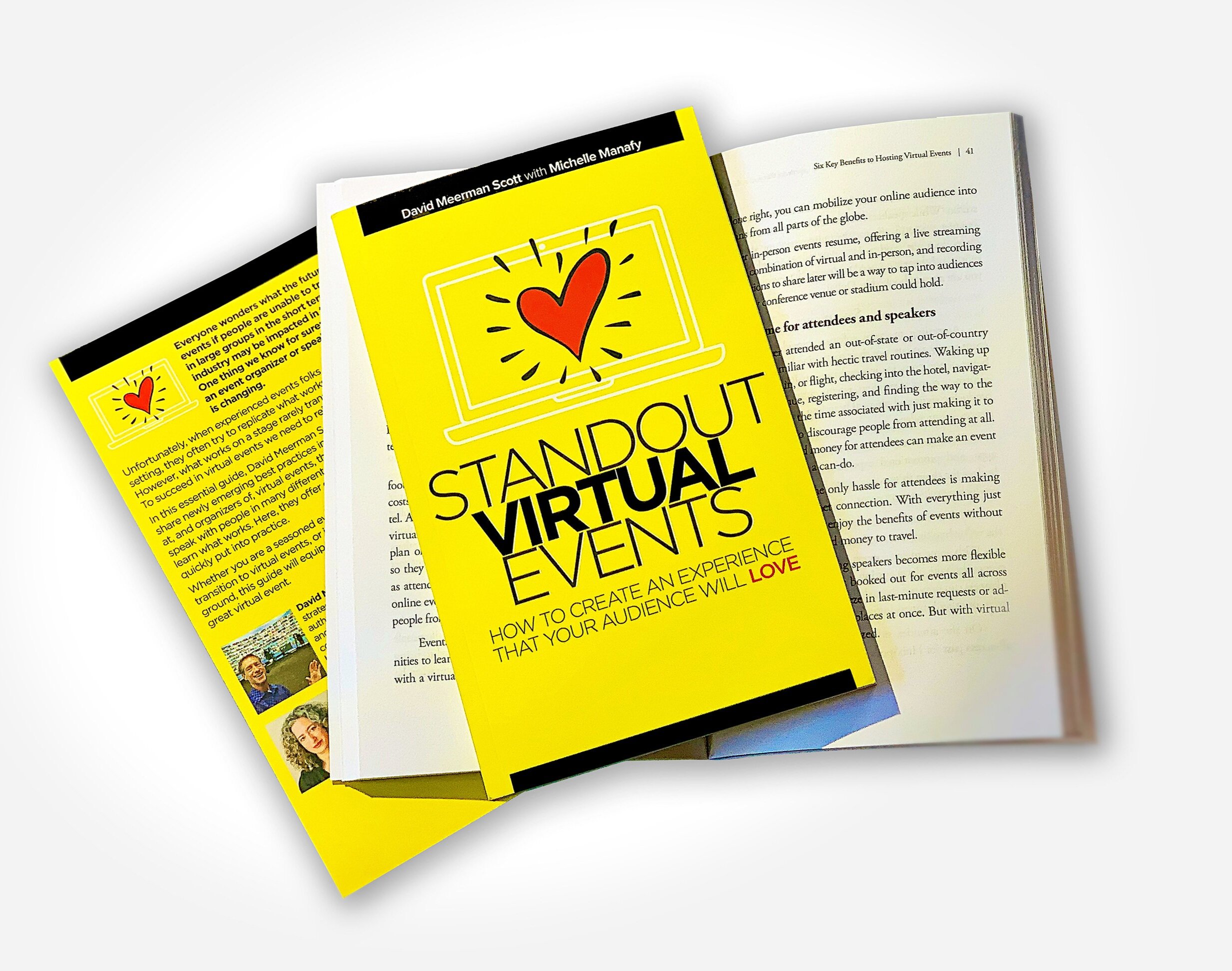A couple of weeks ago, I was hired by David Meerman Scott to work on his recently published book, Standout Virtual Events: How to Create an Experience That Your Audience Will Love that he wrote with the help of Michelle Manafy.
Over the years, I have worked on several of David's books, including Cashing in with Content: How Innovative Marketers Use Digital Information to Turn Browsers into Buyers, World Wide Rave: Creating Triggers that Get Millions of People to Spread Your Ideas and Share Your Stories, Marketing Lessons from the Grateful Dead: What Every Business Can Learn from the Most Iconic Band in History, and recently, Fanocracy: Turning Fans into Customers and Customers into Fans.
In some of these publications, I designed the covers as well as the interior content. In one case, because the publisher assumes control of the design, I was merely a design consultant.
Despite your DIY tendencies, if you are serious about your project, hire a professional designer. After all, should you suffer from appendicitis, is removing your own appendix ill-advised by professionals? (the correct answer is a resounding, Yes!)
David and Michelle's approach to Standout Virtual Events was totally off the "publishing grid." Rather than staggering through the usual publishing hoops and hurdles. This time, we took a crash course in the two-pronged Kindle Direct Publishing System, an Amazon creation. In this particular case, we were looking to complete two forms of publication. 'Standout' would be available as a downloadable e-book as well as a printed paperback.
The KDP "do-it-yourself publishers platform" was developed for those with little or no design background. Now think in terms of DIY home projects that you have witnessed. Occasionally, an amateur carpenter will strike the right cord and produce professional results. From my own childhood experiences with my highly-strung handy-man father, I have been an eyewitness to home projects that would have been far less disruptive, fear-inducing, and time-consuming with the help of a professional.
From my own childhood experiences with my highly-strung handy-man father, I have been an eyewitness to home projects that would have been far less disruptive, fear-inducing, and time-consuming with the help of a professional.
Such is the case with KDP. As a well-seasoned professional graphic designer, any system built with Microsoft Word as a backbone is highly suspect. Word may have captured the word-processing software marketplace but is at least one hundred times worse than PowerPoint, the overly complicated and unintuitive presentation program. Rather than continuing to build on to these dilapidated applications (like an ever-expanding New England farmhouse), Microsoft needs to tear down and start over. I digress.
The other frustrating item I encountered in learning how to crank up the KDP meat grinder was reading and following the directions. The FREE downloadable KDP e-book app eagerly plops into your application folder, but from this point on, the safari has been initiated, and you are on your own!
The instruction copy is small in stature and challenging to read. I also felt that I took two steps forward and one step back, or – the software developers had accidentally omitted a critical step (or three).
To make a long story short, my struggles with the system evaporated over time as I learned what items were within my control and those that weren't. Except for the manuscript created and formatted to Amazon specifications by the authors in Microsoft Word, I laid out the 109-page book in Adobe InDesign for the printed version. I submitted the final document as the required (Amazon/Kindle) KCB file.
The same method was used for the front and back cover, using a template supplied by Amazon/Kindle. On a couple of occasions, the KDP reviewer (most likely a robot) rejected our cover layout as it had determined that we had entered "safe space" that may or not have printed. My assumption that the template was 100% accurate was incorrect, although I tend to push specifications to the absolute limit.
Because there is no human customer service representative to assist, solving such a problem as the one above can lead to a great deal of "revise, submit, revise, submit" activity ensues before reaching a successful upload.
Because there is no human customer service representative to assist, solving such a problem as the one above can lead to a great deal of "revise, submit, revise, submit" activity ensues before reaching a successful upload.
The e-book building app is slightly more comfortable. Still, it is exceptionally dependent on a Word document formatted to Kindle's exact specifications. The e-book is downloadable on a plethora of devices and adjusted to the reader's preferred type size. It is thus making tight typesetting impossible. This fact is a 'Let go, let God' moment for a designer like me who takes great pride in my typesetting. I had entered a NO KERNING zone.
The most exciting war story was David receiving printed and bound proofs the day after we pushed the send button.
Following early minor struggles, both the e-book version and the printed book oozed out of the KDP meatgrinder like a well-seasoned sausage. The most exciting war story was David receiving printed and bound proofs the day after we pushed the send button. Coincidentally, we were still receiving messages that there was a problem with the cover, although correctly printed on the proofs.
TAKEAWAYS
If your lifelong aspiration to write and publish a book is unfulfilled and you have no close relatives in "the business," try Kindle Direct Publishing.
In terms of a page layout software application, Microsoft Word is a dumpster fire and even worse than PowerPoint.
Despite your DIY tendencies, if you are serious about your project, hire a professional designer. After all, should you suffer from appendicitis, is removing your own appendix ill-advised by professionals? (the correct answer is a resounding, Yes!)
Finally, should you require a design professional's assistance, I welcome the opportunity to speak with you about your project.
Cheers! D.




